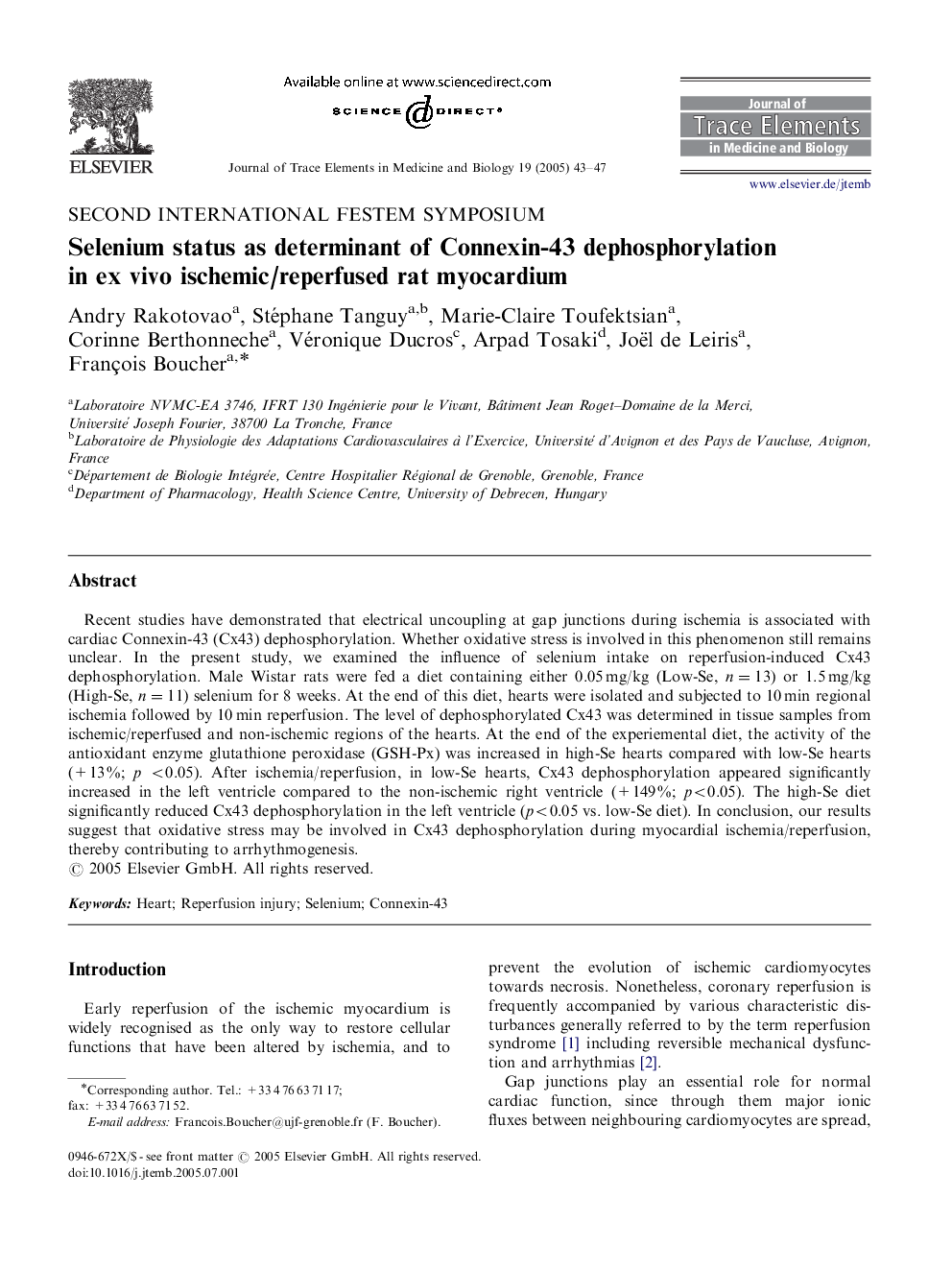| Article ID | Journal | Published Year | Pages | File Type |
|---|---|---|---|---|
| 10556641 | Journal of Trace Elements in Medicine and Biology | 2005 | 5 Pages |
Abstract
Recent studies have demonstrated that electrical uncoupling at gap junctions during ischemia is associated with cardiac Connexin-43 (Cx43) dephosphorylation. Whether oxidative stress is involved in this phenomenon still remains unclear. In the present study, we examined the influence of selenium intake on reperfusion-induced Cx43 dephosphorylation. Male Wistar rats were fed a diet containing either 0.05Â mg/kg (Low-Se, n=13) or 1.5Â mg/kg (High-Se, n=11) selenium for 8 weeks. At the end of this diet, hearts were isolated and subjected to 10Â min regional ischemia followed by 10Â min reperfusion. The level of dephosphorylated Cx43 was determined in tissue samples from ischemic/reperfused and non-ischemic regions of the hearts. At the end of the experiemental diet, the activity of the antioxidant enzyme glutathione peroxidase (GSH-Px) was increased in high-Se hearts compared with low-Se hearts (+13%; p <0.05). After ischemia/reperfusion, in low-Se hearts, Cx43 dephosphorylation appeared significantly increased in the left ventricle compared to the non-ischemic right ventricle (+149%; p<0.05). The high-Se diet significantly reduced Cx43 dephosphorylation in the left ventricle (p<0.05 vs. low-Se diet). In conclusion, our results suggest that oxidative stress may be involved in Cx43 dephosphorylation during myocardial ischemia/reperfusion, thereby contributing to arrhythmogenesis.
Related Topics
Physical Sciences and Engineering
Chemistry
Analytical Chemistry
Authors
Andry Rakotovao, Stéphane Tanguy, Marie-Claire Toufektsian, Corinne Berthonneche, Véronique Ducros, Arpad Tosaki, Joël de Leiris, François Boucher,
